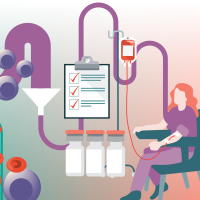Genetic stability of hPSCs and considerations for cell therapy
Cell & Gene Therapy Insights 2024; 10(1), 159–170
DOI: 10.18609/cgti.2024.023
Continuous advances in the isolation, reprogramming, and gene-editing, as well as their scalable and efficient culture and differentiation for commercialization, have positioned human pluripotent stem cells as an attractive starting material for cell therapy. Nonetheless, continuous culture can predispose human pluripotent stem cells to genetic alterations at the chromosomal, region, copy number, and single nucleotide levels. The detection of those alterations is challenging, as no single assay can detect all potential genetic abnormalities in human pluripotent stem cells. However, combinations of approaches can provide a clearer assessment of human pluripotent stem cell lines, and when executed at key process steps can help mitigate costly expansion of genomically-compromised cells and the potential risks that those cells may pose to patients. Encouragingly, while the appearance of some genetic alterations may be concerning, in comparison with other cellular models, human pluripotent stem cells are not inherently prone to genetic instability. Furthermore, emerging strategies to mitigate the appearance and propagation of those abnormalities have shown encouraging results. Close partnerships between human pluripotent stem cell-derived cell therapy developers and regulators will help define genetic stability risks, best practices on testing pipelines, acceptance criteria, and robust guidelines in order to deliver these transformative therapies to patients in need.
